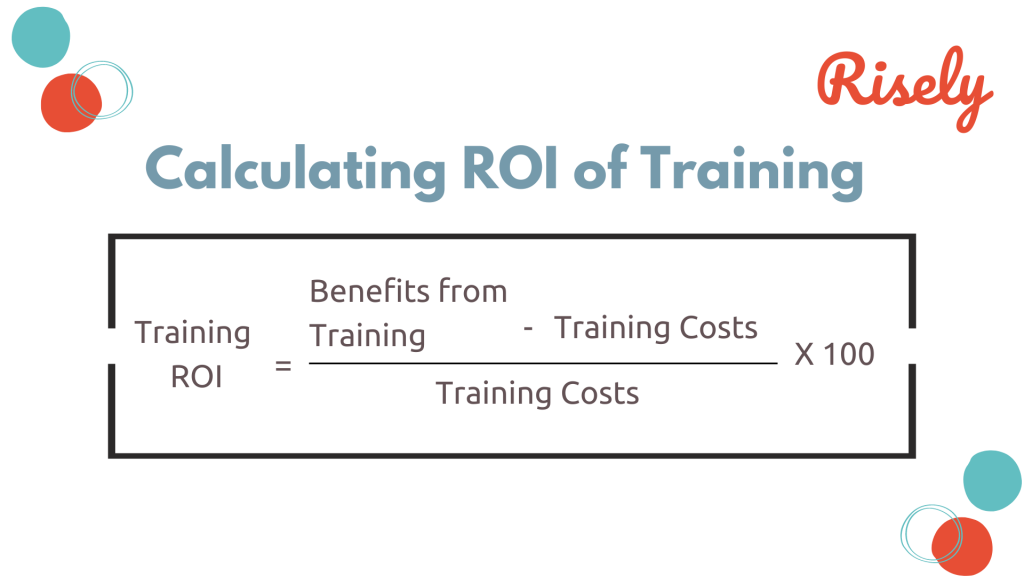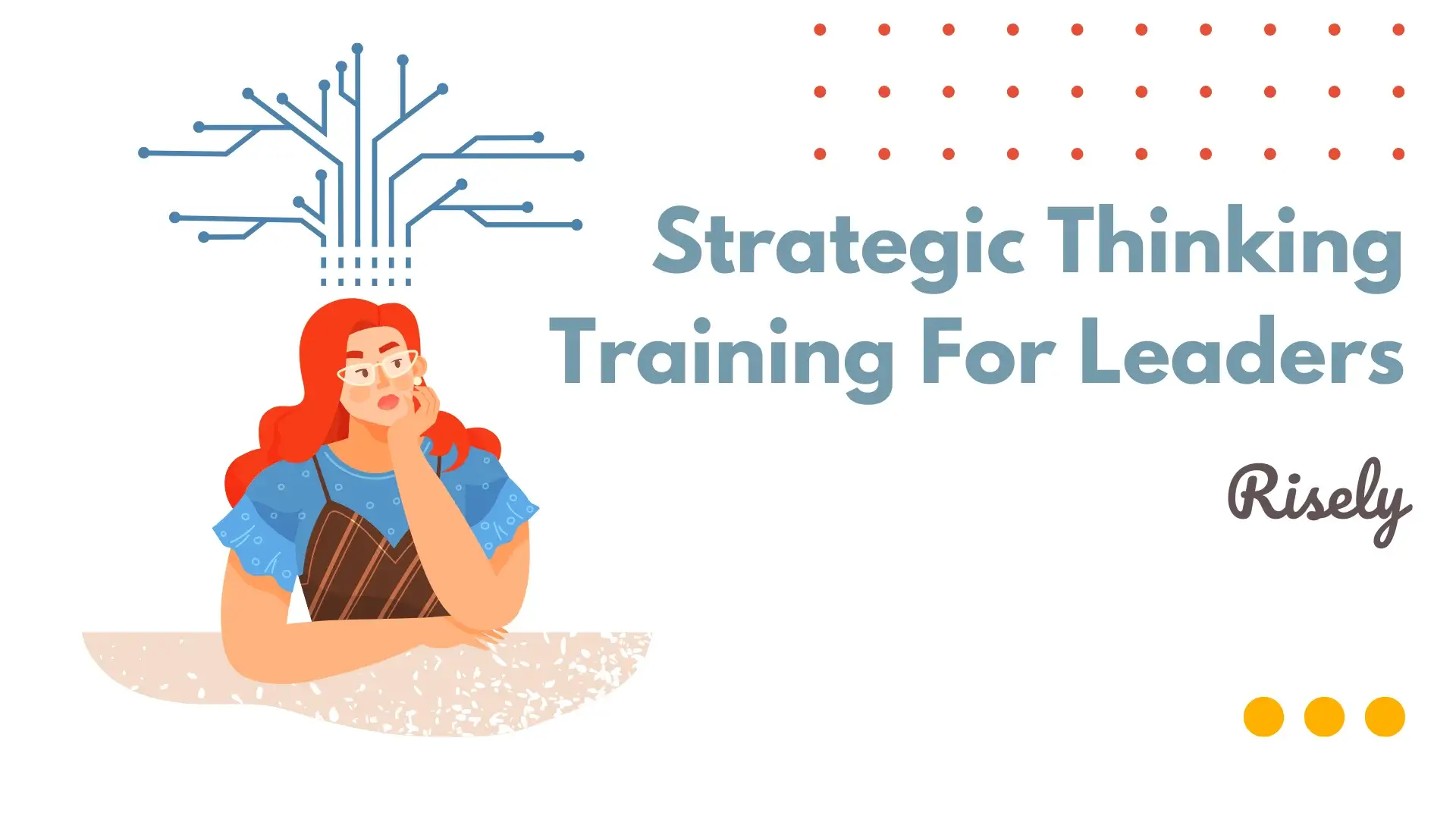Using ROI of Training to Lead Successful L&D Interventions
Are you tired of investing time, effort, and resources into training programs without knowing if they are actually making an impact? It’s time to shift your focus to the ROI of training. This blog will dive deep into ROI and why it is important for any organization. We will explore different methods to calculate the ROI of training, including using a training ROI calculator, supervisor evaluations, impact studies, and more. Additionally, we will discuss how you can use ROI to make your training interventions more impactful. Get ready to make data-driven decisions and maximize the effectiveness of your L&D initiatives.What is ROI, and why is it important?
In simple terms, ROI stands for Return on Investment. It is a financial metric used to measure the profitability or efficiency of an investment. ROI is calculated by dividing the net profit or gain generated from an investment by the initial cost or investment amount and multiplying the result by 100 to express it as a percentage. A higher ROI indicates a more profitable investment, while a lower ROI suggests a less successful investment. To get more specific, the Return on Investment (ROI) of training refers to the value or benefits that an organization or individual receives from investing in training programs. Training ROI can be measured in various ways, such as increased productivity, improved employee performance, reduced turnover, and enhanced skills and knowledge. Measuring the return on investment of training is essential for several reasons.- First, it allows organizations to determine whether their learning and development initiatives are effective and deliver the desired outcomes. By tracking ROI, organizations can identify areas where training may need improvement or adjustment.
- Second, measuring ROI helps organizations justify their training investments to stakeholders, such as senior management or shareholders. Demonstrating a positive ROI can show that training is not just a cost but a strategic investment contributing to the organization’s overall success.
- Third, measuring ROI provides data and insights to inform future training strategies and resource allocation decisions. It helps organizations prioritize investments in areas that have proven to deliver solid returns and make informed decisions about allocating resources for maximum impact.
Understanding the concept of training ROI
Return on Investment (ROI) is a crucial metric for evaluating the profitability and effectiveness of training interventions. By calculating ROI, organizations can determine the monetary value generated from their training programs, making it a valuable way to assess the impact of training on various strategic outcomes. Practical training can positively impact the bottom line, employee retention, morale, and customer satisfaction. Therefore, understanding the concept of training ROI is essential for L&D professionals and HR departments.
Other Interesting Reads
How to calculate the ROI of training?
To calculate the ROI of training, deduct the total costs from the total benefits. Costs include trainer fees, materials, and employee training time. Benefits include improved productivity, performance, and cost savings. Divide net benefits by costs, and multiply by 100 for the ROI percentage. The different ways to do this are:Option 1: Using a training ROI calculator
Using a training ROI calculator is a valuable tool for evaluating the effectiveness and value of your training programs. By measuring the return on investment (ROI) for training and development interventions, you can gain insights into your training efforts’ monetary value and overall impact. A training ROI calculator allows you to calculate and track the ROI by considering factors such as the cost of training, employee performance improvements, and business outcomes. By inputting relevant data and metrics, you can determine your training programs’ measurable results and bottom-line impact.Option 2: Assessing training ROI through supervisor evaluations
One helpful way to assess the ROI of training programs is through supervisor evaluations. By observing employees’ performance and productivity, supervisors can determine the effectiveness of the training program. They play a crucial role in evaluating whether employees apply the new skills and knowledge acquired through training to their job performance. Supervisors’ evaluations measure employee productivity and efficiency improvements due to the training. They assess whether employees successfully implement what they have learned and identify areas where further support or follow-up training may be needed. Involving supervisors in the evaluation process ensures that the training aligns with the organization’s goals and objectives, leading to a better return on investment.Option 3: Conducting an impact study for training ROI
An impact study for training ROI, also known as return on investment, is an effective way to measure the success of training programs and their impact on the bottom line. Organizations can calculate the monetary value and business impact of their training efforts by defining objectives, collecting data on training costs, and measuring key performance indicators. This methodology allows stakeholders to assess the effectiveness of training programs and make data-driven decisions about resource allocation. Conducting an impact study for training ROI is a valuable way to demonstrate the tangible benefits of training, such as increased employee retention, improved customer service, and higher sales figures. Read more here: The Complete Guide to Training Evaluation Survey (With 20+ Questions)Option 4: Applying the Different Models of Training Evaluation for ROI
When measuring the ROI of training programs, organizations can utilize different models to evaluate their effectiveness and impact. One widely recognized model is Kirkpatrick’s Four-Level Model, which assesses training based on participants’ reactions, learning, behavior, and overall results. Another model is Phillips’ ROI Methodology, which compares the monetary benefits of training to its implementation cost. Brinkerhoff’s Success Case Method showcases success stories to demonstrate training’s impact. Kaufman’s Five Levels of Evaluation assesses training outcomes based on input, process, output, outcome, and impact. By applying these models, organizations can make informed decisions about future training interventions, maximizing their return on investment. Learn more about them here: Top 5 Learning Evaluation Models for ManagersOption 5: Utilizing a training effectiveness measurement platform for training ROI
Utilizing a training effectiveness measurement platform for training ROI can yield valuable insights into the impact of your training programs. By leveraging such a platform, you can track and analyze the effectiveness of your training interventions, enabling you to make data-driven decisions that drive business results. A training effectiveness measurement platform allows you to quantify the benefits gained from your training initiatives in monetary terms, helping you demonstrate the value of your training efforts to stakeholders. With this platform, you can evaluate critical metrics such as employee performance improvement, cost savings, customer satisfaction, and employee retention, providing measurable results that contribute directly to your organization’s bottom line.The Role of HR and L&D in optimizing training ROI
The role of HR and L&D in optimizing training ROI is crucial for organizations. HR professionals and L&D teams are vital in ensuring that training investments yield measurable results. They are responsible for developing clear learning objectives aligned with business goals, implementing pre-and post-training assessments, and tracking employee performance before and after training. By calculating the financial impact of training on key metrics such as employee turnover, customer satisfaction, and revenue growth, HR and L&D professionals can demonstrate the monetary value of training programs. Leveraging data analytics and training ROI metrics, they can identify areas for improvement and make informed decisions for future training initiatives. These efforts are essential in driving business outcomes and enhancing the bottom line. Moreover, they can use these metrics to measure the cost-benefit ratio, demonstrating the dollar value of the training investments. Through effective HR and L&D practices, organizations can maximize the ROI of employee training and enhance overall business impact.Using ROI for more impactful training
To maximize the impact of training programs and drive measurable results, measuring the ROI of training is crucial. Organizations can optimize training programs by incorporating ROI-focused evaluations of training and development programs and delivering valuable results.Justification and Decision-Making for L&D Measures
Evaluating the effectiveness and impact of training initiatives is crucial for L&D professionals to justify their processes and the associated costs. Return on Investment (ROI) analysis provides a useful way to determine the financial benefits derived from employee development. This data-driven approach helps make informed decisions about prioritizing and investing in training programs. Demonstrating a positive ROI can also increase support and funding for future L&D interventions. Measuring the costs associated with training and the tangible outcomes or benefits achieved is essential. It includes direct monetary benefits such as increased sales or productivity and indirect benefits like improved employee morale or reduced turnover. Read more here: Understand The Value Of Training To Encourage Learning: With 7 BenefitsChoose to Continue or Drop Training Initiatives
Choosing whether to continue or drop training initiatives can be critical for organizations. While the effective ones need greater support and expansion, the ineffective programs need to be dropped – which ROI calculation helps managers do. Evaluating training programs’ return on investment helps make informed choices and assess their worth. ROI analysis involves considering the costs invested in the training program and the achieved benefits. L&D managers can make data-driven decisions by quantifying tangible and intangible benefits, such as increased productivity, improved employee engagement, and reduced turnover. This data-driven approach helps L&D professionals determine the impact of training on business performance and allocate resources effectively.Identify Best Practices to Adopt
Identifying best practices to adopt in measuring the effectiveness and impact of training initiatives is crucial for teams. By incorporating these practices, they can ensure that their investment in learning and development programs generates positive returns. By considering L&D metrics such as learner satisfaction, employee engagement, and business outcomes, organizations can gain a holistic understanding of the training’s effectiveness. It allows the L&D team to identify what’s working and what’s not. For instance, one-on-one meetings can work as a better post-training feedback scheme than surveys, allowing for more interaction. The team can decide which feedback methods they want to embrace and enhance based on such events.Create Effective Resource Allocation Habits
Effective resource allocation plays a crucial role in maximizing the ROI of training. Allocating resources wisely involves identifying the most impactful areas to invest in, such as targeted skills development or addressing specific performance gaps. Organizations should conduct a thorough needs analysis before implementing any training program to ensure adequate resource allocation. This analysis helps identify the areas where resources should be allocated for maximum impact. By consistently using ROI as a decision-making tool, organizations can make informed choices about future L&D interventions and ensure measurable value for the organization by investing valuable resources only in those ideas that lead to results.Ensure Alignment with Organizational Goals
To maximize the return on investment (ROI) of training, it is crucial to align the goals of your training initiatives with your organization’s overall objectives. By ensuring alignment with organizational goals, you can demonstrate the value and impact of training and measure its effectiveness and efficiency in achieving your business outcomes. This strategic approach helps you make data-driven decisions for future investments in training programs, ensuring that resources are allocated effectively. By keeping the business goals at the forefront, L&D professionals can optimize employee training in a suitable direction, translating it into tangible results that positively impact your bottom line.Conclusion
In conclusion, calculating the ROI of training is crucial for L&D interventions to be successful. It helps justify the investment in training programs and make informed decisions about continuing or dropping specific initiatives. By utilizing various methods such as training ROI calculators, supervisor evaluations, impact studies, different models of training evaluation, and training effectiveness measurement platforms, HR and L&D professionals can optimize training ROI. It enables them to identify best practices, allocate resources effectively, and ensure alignment with organizational goals.Download free resources for L&D from Risely.
Grab free resources to super charge L&D performance with your team.
Training ROI FAQs
What is the ROI of training?
The ROI (Return on Investment) of training refers to the measure of the financial return or value generated as a result of investing in training programs for employees. It helps organizations determine the effectiveness and impact of their training initiatives.
How do you calculate ROI in training?
Calculating ROI in training involves comparing the financial benefits or gains resulting from training against the costs incurred. The formula typically includes subtracting the total cost of training from the total financial benefits generated and then dividing the result by the cost of training. The final value is often expressed as a percentage.
What is ROI after training?
ROI after training is the numeric representation of the return on investment achieved after implementing a training program. It signifies the financial value or benefits gained relative to the investment made in training employees.
What is ROE vs ROI training?
ROE (Return on Expectations) in training refers to a broader evaluation of the outcomes and impact of training beyond just financial measures. It considers factors such as improved employee performance, increased productivity, enhanced skills, knowledge transfer, and overall organizational effectiveness. ROI focuses primarily on financial aspects, while ROE takes a more comprehensive approach to assess the overall value and impact of training initiatives.
Other Related Blogs
Strategic Thinking Training For Leaders Simplified
Strategic Thinking Training For Leaders Simplified Strategic thinking is a vital skill for business leaders, managers, and employees in today’s fast-paced, competitive world. It goes beyond day-to-day tasks and involves…
10 Best Strategic Thinking Coaches to Speed Up Your Growth
10 Best Strategic Thinking Coaches to Speed Up Your Growth In the fast-paced and ever-evolving business landscape, strategic thinking has become more than just a desirable trait; it’s a critical…
5 Powerful Skills to Become an Exceptional Business Leadership Coach
5 Powerful Skills to Become an Exceptional Business Leadership Coach In the world of business, leadership is of paramount importance. It is something that makes all the difference. With so…
8 Strategic Thinking Examples to Help You Succeed
8 Strategic Thinking Examples to Help You Succeed Strategic thinking is an essential skill that leaders and managers must possess to steer their teams toward success. It involves analyzing situations,…


